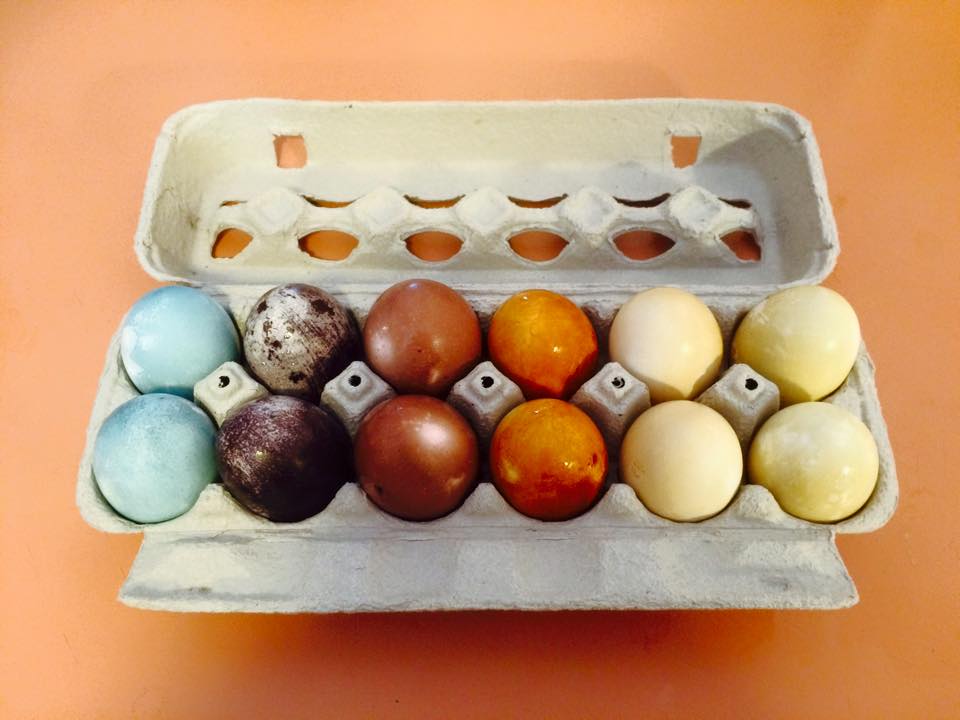 Naturally dyed Easter eggs can be made from simple household ingredients. From left, these eggs were coloured with red cabbage, blueberries, beet juice, tea, cumin and spinach for Ostara, a Norse holiday. Photo provided by Amber Coury.
Naturally dyed Easter eggs can be made from simple household ingredients. From left, these eggs were coloured with red cabbage, blueberries, beet juice, tea, cumin and spinach for Ostara, a Norse holiday. Photo provided by Amber Coury.
Easter eggs are getting a makeover from families interested in getting their kids in a greener lifestyle.
Eco-friendly colouring kits are available to order online but stores within North Bay aren’t stocking them.
However, searches online reveal all-natural recipes to dye your Easter eggs at home.
While the recipes are simple to follow, some colours require unusual ingredients. Cutting up a beet and adding it to boiled water then adding vinegar would result in a dark pink dye. For a blue dye, one recipe suggests cutting up a red cabbage as part of the ingredients.
As for faint pink, one recipe calls for amaranth flowers while another one suggests blending the skins of avocados with some beet juice.
Amber Coury and her partner Jennifer Day decided to give the natural dyes a try before Easter. The couple chose to celebrate Ostara, the pagan version of Easter closely related to the spring equinox.
“We thought it would be fun to celebrate Norse and Scandinavian holidays this year,” Coury stated in a Facebook conversation.
“I personally just thought it would be cool to see how it came out in comparison to the artificial dyes you buy at the store.”
Coury and Day found the recipes through Pinterest and had some of the ingredients at home.
“Some of the stuff it called for we had on hand anyway, so it wasn't like we spent a lot of money and wasted a bunch of food,” Coury added.
“We ended up making a salad with the cabbage that we didn't use and ate the beets for a snack. I hate cumin so I was glad to be rid of it.”
Dyeing the eggs was also a test run for future activities.
“Jen was fond of the idea because we plan to have kids someday and it would be a fun and safe activity for them to do. Jen’s words were ‘the less garbage, the better.’”
Some sites lean more on fruits and vegetable-based dyes while others suggest spices get used instead.


